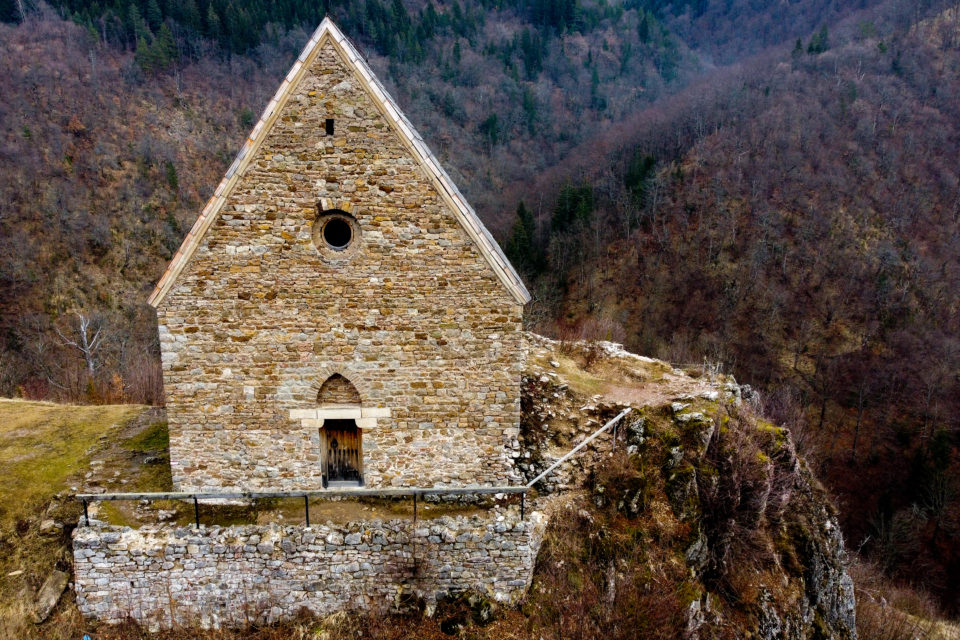
The Royal Town of Bobovac is located where the municipalities of Kakanj and Vareš meet. It was first mentioned during the reign of Ban Stjepan II Kotromanić in 1349/1350 and is considered one of the oldest cities in Bosnia.
This famous site has been recording an increase in the number of visits year on year. According to Visit Vareš travel agency, Bobovac is visited by just over 13,000 tourists a year. Expert on tourism in Vareš, Almir Čikmiš, says that this destination is the most beautiful in autumn, during September and October.
“This is one of the most popular locations for one-day visits and excursions. From experience, I can say that many of the tourists visit the Royal City of Bobovac more than just once. The breathtaking configuration on which the city was built, the mausoleum of Kotromanić with the tombs of Bosnian kings and queens, and a well on the location of the royal court all add to the popularity of the place,” adds Almir.
Visitors, he explains, are most interested in the beautiful nature that surrounds the former Royal City. He also emphasizes that Bobovac is the most important historical site and cultural-historical monument in Bosnia and Herzegovina. “Due to the importance of Bobovac, I would recommend a mandatory visit for primary schools, be it a history class in nature or a school trip,” he adds.

Talking about Bobovac is a responsibility and it demands several points of view, says Emina Musić, a history teacher at the Mješovita middle school in Busovača. As a historian, she first mentions the position and natural fortification of the city and recalls how it stood out not only in the Balkans but also in Europe for its defense capabilities.
“It is often mentioned in the sources as ‘tough’ because it was practically invincible, which many Bosnian enemies confirmed with attempts to conquer. Another characteristic of Bobovac that sets it apart is its status and significance. As the seat of Bosnian kings and capitals, it was where archives and treasuries were located, and the Bosnian crown was kept,” she explains.
In the late 12th century, attacks on Bosnia became more frequent, influencing the rulers’ decision to seek protection in the surrounding hills. Ban Stjepan Kotromanić is credited with making Bobovac the military and administrative seat of the Bosnian kings. Professor Emina Musić says that the most beautiful stories from her childhood are connected to Bobovac. She was born in Visoko, but her origins go back to Kraljeva Sutjeska.
“Like any girl, I loved stories about the castle and its kings and queens. Later, I became disappointed because the image of Bobovac in my mind’s eye was not the same as reality. However, the more I researched, that old dilapidated city hidden in the greenery of the Bosnian hills was getting bigger and more impressive in my mind. For me, the whole locality is a holy land that testifies to Bosnian statehood, stability and sustainability. Our glorious history, which can be envied by the great nations of the world, is shrouded in oblivion, but if we take a look we will realize that we Bosnians have our own Rome, and it is called Bobovac.” She recommends that everyone visit this city and says, “It generates a special energy, especially in autumn.”
Her childhood was marked by legends, and one of them is about a hidden treasure that is located somewhere around the city or along the city walls. Historical arguments prove that the hidden treasure is in fact keys to the city handed over to Sultan Mehmed II Fatih by Prince Radak, and many have hoped to find them.

“Namely, the legend says that the Ottomans had tried to conquer the city for seven years. What they would demolish during the day, the defenders would rebuild at night. The Sultan pondered and sought a solution. He decided to tell Prince Radak that he would reward him richly if he handed over the city to him. It was tempting for Radak, so he betrayed his king and handed him over to Sultan Mehmed. Having captured the city, the sultan divided the people into three groups: the first group was left in the city; he gave the second to his pashas; and he sent the third to Constantinople. When Radak came and asked for a reward, the sultan was ruthless. He ordered a soldier to take the traitor out of the city onto a large rock where he beheaded him. That rock, which remains to this day, is called Radak’s rock – Radakovac – so that, as the locals say, it would stand as a warning as to the fate of traitors,” says Emina.
Those who decide to visit Bobovac and get to know the history, but also hear the legends, can find accommodation in several rural households.
The mayor of Vareš, Zdravko Marošević, explains that there some obstacles yet to overcome, such as the improvement of the road and parking facilities.
“The problem with the expansion of this road is that there is an inhabited village where houses were built next to it and, if they expanded it, they would have to demolish a good part of that settlement, which is impossible. The municipality of Vareš itself cannot do anything about it. The responsibility for the roads is on the canton and the state, which have not done anything so far,” says Marošević.
Although Bobovac belongs to Vareš, it was connected with Kraljeva Sutjeska, and many important events took place there. Precisely because of this connection, along with Bobovac, you should also visit Kraljeva Sutjeska. Marošević says that Bobovac is actually “an unfinished story, all the facts of which will take many years to reveal”.
While waiting for someone to finish its story and bring as many tourists as possible, Bobovac defies time and, despite all the difficulties, is always busy welcoming those who come to learn about its long, glorious and difficult history.






